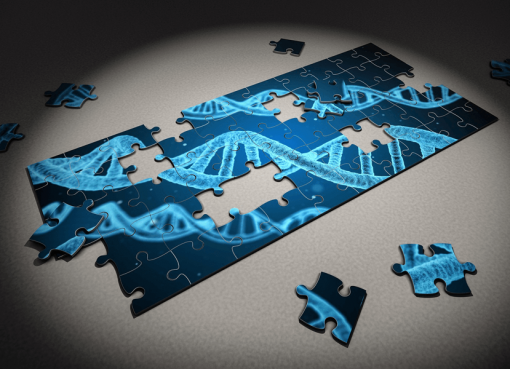Quantum computing versus classical computing in the field of Biological Sciences
Dweep Chand Doimari
M.Tech. (Network and Internet Engineering)
System Analyst
College of Veterinary Science
Assam Agricultural University
Khanapara, Guwahati-781022
With the advent of classical computing in the modern era, advances in research related to biological science has accelerated to a very far extent but due to computational limit of classical computing. It has started to reach a point where most of our powerful supercomputers will take longer than the age of the universe to solve our problems. To solve this problem, in the present scenario quantum computing comes into play. Quantum computers are not actually faster than the classical computers we are currently using today but they are operating in a fundamentally different way so that it can avoid unnecessary computation.
The information in quantam computer is stored in qubits which can have two level systems similar to spin-½ particle. The state of single qubit can be represented as complex numbers α0 and α1 satisfying |α0 |2 + |α1 |2 = 1. A phenomenon known as quantum entanglement is the basis of quantum computation in which there is correlation between multiple qubits. In quantum computing, the information in qubits are manipulated using quantum gates. A quantam gate is basically a quantum circuit that handles a small number of qubits like the logic gates in classical computing that handles 0 and 1 binary. Quantum gates are defined by unitary matrices.
The challenges that are faced by the world for making a quatum computer is mainly related to errors that a quantum computer generates during computation, which decreases its efficiency. To minimize this error, there is a method called quantum error correcting code which can be deployed but this method also requires a quantum computer to generate large number of qubits. So, it will require advancement in engineering to achieve fault-tolerance in this regard.
In the field of computational biology, where the aim is to gather large amount of data and to process it using statistical methods and machine learning techniques, quantum computing can play an important role. To train and develop a new machine learning model, its computational requirements are very high. A recent advancement in using general purpose graphical processing units showed that it gives us exponentially faster algorithms to train machine learning models. Quantum computing can give us a similar result in training and developing faster algorithms for machine learning.
There are future opportunities for the existing quantum algorithm such as function minimization, which are generally written in terms of abstract and highly general functions. If biological applications can target specific mathematically well-defined tasks, in that case it can lead to targeted quantum algorithm development. The key areas of ongoing research in quantum computing are as follows:
- Machine learning and big data: Present Quantum computers have limitations in processing large classical data sets in superposition. It means that complicated calculations in small datasets can be easily implemented, e.g. finding the best Bayesian network but have problems in solving large data sets efficiently. The solution of this problem will be to use data reduction methods which will select small sample of data and use it as an optimization problem, or the quantum computers could be used to solve the problems related to complexity of the analysis in a small data. There is a possibility of using qRAM known as quantum RAM which will give the quantum computers the ability to process large data sets as a superposition of qubits.
- Stimulation of classical and quantum system: For solving large linear systems of equations as well as Partial Differential Equations and boundary, value problems quantum algorithms have been developed. All of these algorithms can efficiently scale with the size of the problem but not with other parameters for example condition number or non-linearity. There are also other restrictions on these algorithms that make a research question to determine how much speed can it provide for a specific application given to it.
Quantum computing can be extended to biomolecular and biological problems. Recently a quantum annealing approach was employed in the exploration of the coarse-grained folding landscape of a six-amino acid peptide, within a 2D lattice framework. By this demonstration, it effectively showed the scope of quantum computing in biomolecular and biological problems. The quantum annealing was also used to evaluate against a set of classical methods on an optimization problem which searched the consensus DNA sequence motif of transcription factor binding. In this particular case, the authors trained a classifier and a ranking algorithm and by this, a slight improvement was found over classical approaches in problems related to classification.
Recently, Amazon launched its quantum computing platform known as Amazon Braket platform. This platform can act as a launch pad for quantum computing for people who want to explore quantum computing. It takes advantage of fuzziness of quantum algorithms, where qubits can represent multiple values simultaneously. This is paid cloud-based platform, where people can experiment with quantum computing. For now, this quantum computing service is available to AWS’ US East (Northern Virginia), US West (Northern California) and US West (Oregon) regions. It relies on hybrid approach of classical and quantum computing resources to solve the computation problems. Its pricing is based on per-task and per-shot that will be specific for each quantum processor. For using the simulator, it is billed per second of processing time, with a 15-second minimum time.
This is one of the examples of the recent practical quantum computing platforms available to us for testing of new quantum algorithm to improve its efficiency. But for the quantum computer to surpass classical computers, it has to increase number of qubits generated, improve connectivity between qubits and reduce error rates both for operation and storage. The development of algorithmic area, where all classical computing faces computational limit, has to be solved.
So, we can say that quantum computing is a promising method in the field of computers to solve our problems in understanding biological science. One day quantum computers will probably be a part of our daily life.
References:
- Emani1, P.S.; Warrell, J.; Anticevic, A.; Bekiranov, S.; Gandal, M.; McConnell, M.J.; Sapiro, G.; Aspuru-Guzik, A.; Baker, J.; Bastiani, M; McClure, P.; Murray, J.; Sotiropoulos, S.N.; Taylor, J.; Senthil, G.; Lehner, T.; Gerstein, M.B. and Harrow, A.W. (2019). Quantum Computing at the Frontiers of Biological Sciences. Eprint: arXiv:1911.07127
- Outeiral, C.; Strahm, M.; Shi, J.; Morris, G.M.; Benjamin, S.C. and Deane, C.M. (2020). The prospects of quantum computing in computational molecular biology. WIREs Comput. Mol. Sci. 2020: e1481. DOI: 10.1002/wcms.1481
- Boyle, A. (2020). AWS opens up its Amazon Braket platform as ‘launch pad’ for quantum computing. GeekWire – Science. https://www.geekwire.com/2020/aws-opens-amazon-braket-cloud-platform-launch-pad-quantum-computing/
- Anon. (2018). Quantiki, Quantum Information Portal and Wiki. https://www.quantiki.org/ wiki/quantum-gates




